Nanteuil-le-Haudouin to Meaux
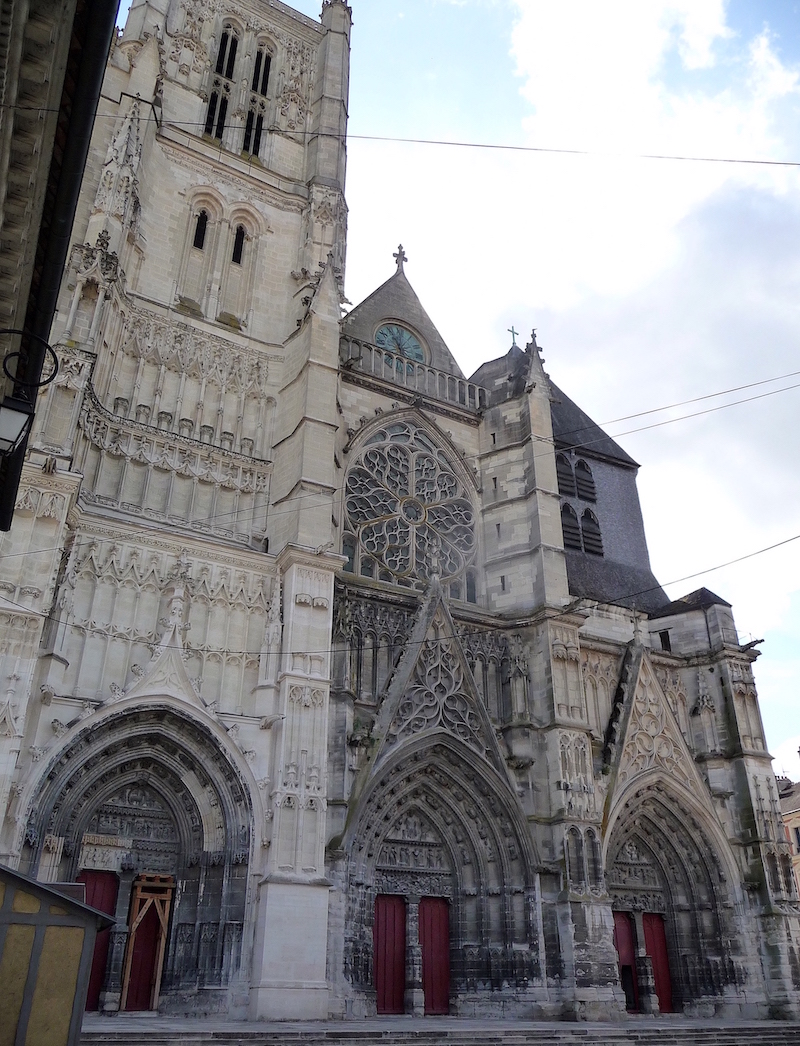
Hauts-de-France
7. Nanteuil-le-Haudouin to Meaux
Medium
7h30
28,6km
+215m
-253m
Step
Embed this item to access it offline
Cereal crops will accompany you, according to the seasons you will have clear views or obstructed by corn plants. You will cross the villages with, for some, churches that deserve a look. The small river La Thérouanne accompanies you before arriving in the suburbs of Meaux.
9 points of interest
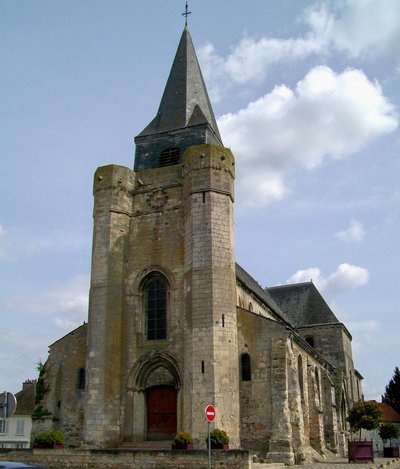
Église Saint-Pierre de Nanteuil-le-Haudouin - P. Poschadel TouristSaint-Pierre Church à Nanteuil-le-Haudouin
The oldest religious establishment in the town is the priory, often improperly referred to as an abbey. It was founded after the middle of the 7th century by Saint Valbert de Luxeuil (595-670), a disciple of Saint Colomban, where he joined the monastic community of Luxeuil between 615 and 620. He was abbot of the community from 630 to 670.
Valbert was the grandson of the first lord of Nanteuil, Chagneric, who had received the land from the hands of Clovis for services rendered. The priory has a church dedicated to Notre-Dame. Under the impetus of the abbot of Cluny, Saint Hugues, the priory of Nanteuil was attached to the order of Cluny in 1095. In all likelihood, the parish church was founded by the priory after this date, in order to meet the demand of the population and the Count of Nanteuil. The church is consecrated to Saint Peter and is built according to a cruciform plan. It is composed of a nave of four bays with aisles and aisle sides; a transept that does not overflow; a choir with a flat chevet of only one bay; and two side chapels of the choir, with a square plan. The bell tower stands in the centre of the west facade, above the first bay of the nave. With the exception of the belfry floor of the bell tower with its slate-covered spire and the side chapels, the entire church was built in a single throw during the third quarter of the 12th century. It is a robust and austere construction, whose exterior is hardly decorated outside the portals, and whose interior displays a heavy style devoid of refinement. As the two strong octagonal turrets preceding the western façade indicate, the building belongs to the group of fortified churches and is one of the very few representatives of this type in the region. The choir, its two side chapels and the transept were rebuilt in the 18th century.
Stèle en hommage au groupe Hildevert - Oissery - Association Colomban en Brie HistoricalThe 1944 battle stele at the Condé d'Oissery Farm
Oissery : the stele in front of the farm of Condé, facing the pond of Rougemont
In the context of the Liberation in 1944, the leaders of the Armand-Spiritualist resistance network transformed it from a classic action network to a structured military formation. Thus, at the beginning of August, the 1st Paris Franc regiment was born, composed of companies placed under the command of the network's main leaders. A violent confrontation opposed them to the retreating enemy troops on August 26th 1944. The toll was very heavy: 105 people died (or 120 according to the plaques on the monuments). There were also 65 prisoners and missing persons.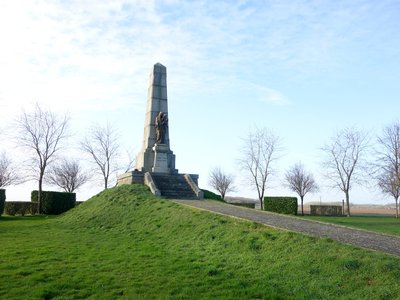
Monument érigé par Mgr Marbeau en remerciement à la Vierge pour avoir protégé la ville de Meaux - Association Colomban en Brie HistoricalBarcy village disaster-stricken by the Great War
Upon arrival in these villages, the sites of the first Battle of the Marl, September 5-10, 1914, are approached.
Barcy remains famous for the battles that took place there during the first Battle of the Marne. The commune is on the front line of the battle and was partially destroyed. The village was used as a starting base for the French lines during the counter-attack of 7 September 1914. Following the wish of Monseigneur Marbeau, Bishop of Meaux, that Meaux should be spared, it was decided to build a memorial, inaugurated in 1924, on the very spot where the German advance was stopped. The building is made of granite and cast iron and represents the Virgin Mary with the inscription "Thou shalt go no further".
It was also in the Barcy Fields that on October 4, 1863 between 8:00 and 9:00 pm, the Giant, Nadar's airship, left the Champs de Mars in Paris at 5:00 pm, in the presence of Emperor Napoleon III, landed. It is also in this plain that the first agricultural tractors were used as early as the Great War.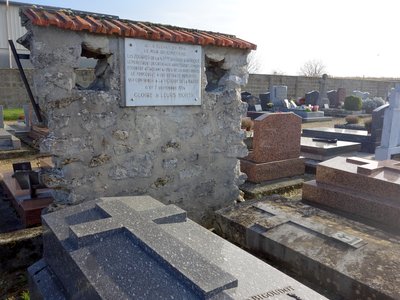
Le mur du cimetière de Bracy avec ses meurtrières de 1914 et la plaque commémorative - Association Colomban en Brie HistoricalThe Battle of Bracy in September 1914
On 7 September 1914, the Zouaves of the 45th African Division attacked the Germans entrenched above Chambry. The fighting raged on. On the 8 Septembre, the Zouaves reached the cemetery at the exit of the village and, all night long, they pierced the walls to make a line of defence sweeping across the plateau where the Germans had retreated. In the present cemetery you can see part of the western wall of the old cemetery has been preserved with its loopholes. The church was used as a field hospital. The high altar became the operating table and the stretchers for the wounded laid on the pews. A wood paneling still reads "Bricard Édouard wounded September 9, 1914 Pray for me".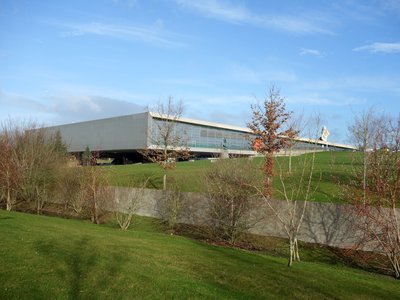
Le musée de la Grande Guerre depuis la Via Columbani - Association Colomban en Brie HistoricalAmerican Monument and Museum of the Great War of Meaux
American Monument: This gigantic 26-metre high monument is erected at the exit of Meaux near the Museum of the Great War.
In the United States, the victory of the Marne enthused the many supporters of France. After this victory, the idea of creating a commemorative statue became a reality, a competition on models was organized, the winner was Frederick Mac Monnies. However, it took 14 years before the project was completed and it was not until September 1932 that the American Monument was inaugurated.
In the immediate vicinity, the Great War Museum
With a collection of nearly 70,000 objects and documents retracing the daily and military life of the war from 1914 to 1918, the Museum allows you to learn more about the First World War, also known as the Total War.
Musée de la Grande Guerre à Meaux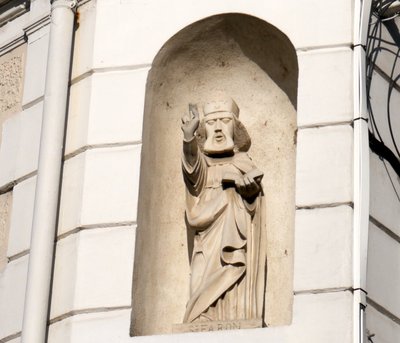
La statue de Saint-Faron - Association Colomban en Brie St ColumbanSaint-Faron à Meaux
Heading towards the cathedral of Meaux, on Via Columbani, you take the rue Saint-Faron. A Saint-Faron statuette is installed in a niche at the front of a building at the beginning of rue Saint-Faron. It is the site of the former monastery of the Holy Cross founded, around 660 by Saint-Faron, bishop of Meaux. Saint-Faron asked Saint Valbert to send him monks from Luxeuil. The community will live according to the rule of Good Fathers Benedict and Colomban practiced in the monastery founded by Saint Colomban in Luxeuil. This monastery will welcome Irish monks, including the future Saint Fiacre.
After the Revolution, the remains of the abbey were occupied by a hospital. In 2016 archaeological excavations were carried out.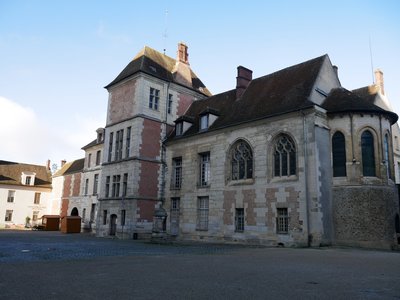
Association Colomban en Brie Chapelle du palais épiscopal de Meaux - Association Colomban en Brie HistoricalEpiscopal City of Meaux
Once reserved for the bishop and canons of the cathedral and their entourage, the Episcopal City boasts a mainly 18th century architecture, but is also decorated with buildings from various periods. The Old Chapter, the Episcopal Palace and the adjoining buildings now house the Maison du Brie de Meaux, the Bossuet Municipal Museum (paintings, sculptures), the Bossuet garden giving access to the old rampart.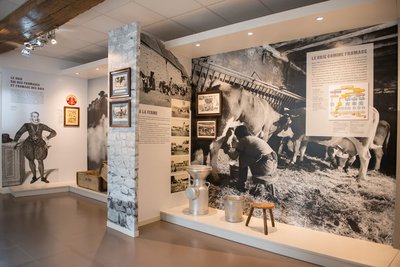
Musée du Brie de Meaux - Musée du Brie de Meaux CulturalBrie de Meaux cheese
Reconstructions and staging will allow you to learn more about the history of this famous cheese. You will discover the different stages of its production, from harvesting the milk to maturing in the cellar. Then you will understand the current challenges of the Brie de Meaux PDO proudly represented by its Brotherhood.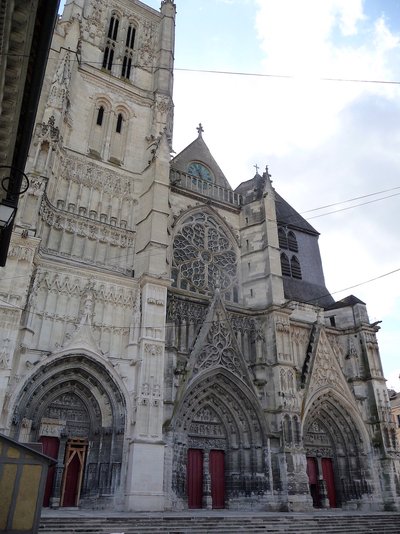
Façade la cathédrale Saint-Étienne de Meaux - Association Colomban en Brie TouristSaint-Étienne Cathedral in Meaux
Saint Stephen's Cathedral surprises with its unfinished facade: above the three portals, the upper floor of the high windows leads the eyes to only one tower, in flamboyant style, on the northern side. Despite its 350 years of construction, it is relatively harmonious and its short length (barely 2/3 of that of Paris) is compensated by an impressive rise in all its five ships. It is home to the tomb of Bishop Jacques-Bénigne Bossuet, the "eagle" of Meaux in the 17th century.
More information: Wilkipédia
Description
In front of the church of Nanteuil-le-Haudouin on the right rue de l'Hôtel-Dieu
- Turn right at the crow's-foot with wrought iron cross, at the intersection of Ognes with D548 rue Claude Tillet, second street on the right, rue des Fontaines, direction Bregy.
- At the crossroads with two farm tracks on your right take the second track south, cross the D41 straight ahead, turn left at the Condé farm, stay on your right, cross the brook La Thérouanne, rue de Condé.
- After the subdivision on the left rue de l'Eglise or rue de Oissery, pass in front of the church on the left at the crossroads, rue du Vieux Cimetière follow the main road on the left and then on the right, cross the D9 straight on the right on D127, on the right in the small wood Ru du Bois Colot.
- Cross D401 rue du Pont, slightly on your left, go around the village on your right D127, rue des Épinettes, first farm road on the left, then on the right
- Before junction with D38 take first street on the right rue de Mardelle, at the crossroads of the church of Barcy on the left rue de Meaux D97, cross D38 straight ahead, at the crossroads of the Memorial on the right, go over the TGV line.
- Turn right at the junction with D140, rue d'Ortheuil, pass in front of the church, rue de la Ville, rue de Meaux, first street on the left rue de Reuilly, left rue de la Jacquelle, dirt road on the right before the electricity distribution station.
- Before the D504 turn left to follow the road to the roundabout to cross safely, in the roundabout take a dirt road between the D405 and the access road to Meaux.
- First road on the left take pedestrian path, chemin de la Justice, cross rue du Général Joseph Maunoury, rue Mac Monnies, rue des Pommiers always straight ahead at the junction with rue du Gravery, stay on your right towards the canal on the left along the canal until the bridge, cross the canal and take towpath, pass under the useless bridge first road on the left then left in front of the market gardens on the right.
- Go around the housing estate on the left rue de Châage, on the right at the junction rue Georges Lugol, on the right boulevard Jean Rose first street on the left rue Bossuet you arrive at the cathedral Saint-Etienne de Meaux.
- Departure : Saint-Pierre Church, 1 rue du Puiseau, 60440-Nanteuil-le-Haudouin
- Arrival : Saint-Etienne Cathedral, 1 rue Saint-Étienne, 77100 Meaux
- Towns crossed : Hauts-de-France and Île-de-France
Altimetric profile
Transport
Report a problem or an error
If you have found an error on this page or if you have noticed any problems during your hike, please report them to us here:




